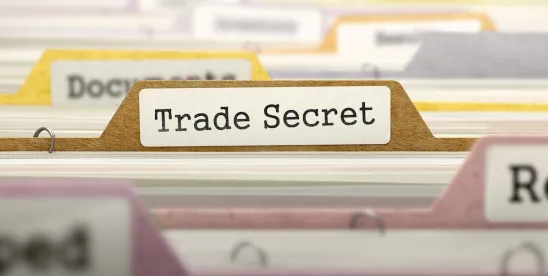The US Court of Appeals for the Tenth Circuit affirmed a summary judgment dismissal of a trade secret misappropriation complaint, finding that the plaintiff failed to take reasonable measures to maintain the secrecy of a customer list. The Court also reversed the district court’s Daubert ruling, finding that it improperly exceeded the scope of Fed. R. of Evid. 702. John Snyder v. Beam Technologies Inc., Case No. 24-1136 (10th Cir. Aug. 5, 2025) (Matheson, Bacharach, Federico, C.J.)
John Snyder downloaded a national customer list containing more than 40,000 names from his former employer’s client-relationship management system. According to metadata analysis, Snyder last modified the file only three minutes after its creation, strongly suggesting that no meaningful changes or additions were made after the download. Snyder’s employment with the company ended in 2016. Following a two-year period of unemployment, he accepted a position with Beam in 2018.
Synder claimed that Beam induced him to join the company by promising compensation in exchange for customer information he obtained from his former employer. After beginning his employment at Beam, Synder created derivative documents containing subsets of the customer list. However, he inadvertently included the entire customer list as a separate tab in each of the documents he emailed to Beam employees. The documents were sent without any confidentiality markings or indications that they contained trade secrets. Snyder did not restrict access to the documents, apply password protection, or notify Beam that any of the content was proprietary or confidential.
After realizing he had distributed the full list to multiple Beam employees, Snyder took no action to object to Beam’s use of the data or attempt to retrieve the documents. He also failed to inform Beam that he considered any of the materials to be trade secrets. Instead, Snyder appeared to ratify the disclosure, telling Beam’s chief executive officer that he had intentionally shared the customer list with the recipients. A few months later, Beam terminated Snyder for unexplained reasons.
Synder sued Beam for trade secret misappropriation and several state law claims. Beam moved for summary judgment on the trade secret claims, which the district court granted, finding that Synder failed to show that he owned the customer list. The district court denied Beam’s motion on Synder’s other claims.
Both parties filed motions to exclude expert witness testimony at trial. The district court granted Beam’s motion to exclude Snyder’s damages expert under Fed. R. of Evid. 702, ruling that the expert could not support Snyder’s claimed damages for the remaining causes of action.
The district court found that Synder failed to show that he could obtain lost wages damages on any of the surviving claims. Expanding the scope of its ruling, the district court excluded not only the expert testimony, but also all evidence and fact witnesses related to lost wages damages at trial. Following the court’s ruling, Snyder and Beam settled one of the claims and jointly moved to dismiss the remaining claims. Snyder then appealed.
Synder argued that the district court erredin its summary judgment ruling in finding that he provided insufficient evidence of his “ownership” of the customer list. He argued that under the Colorado Uniform Trade Secrets Act (CUTSA), he only needed to prove possession, not ownership, of a trade secret. The Tenth Circuit agreed, relying on its own precedent, and reversed summary judgment based on the “ownership” element of the CUTSA claim.
The Tenth Circuit next addressed whether Synder took reasonable measures to maintain secrecy and whether Beam misappropriated the customer list. Snyder argued that his efforts to maintain secrecy included saving the list on his personal computer, on a USB drive, and on his password-protected work laptop. However, the Court found these actions insufficient, describing them as “benign” and falling short of the reasonable steps required to preserve trade secret protection. The Court emphasized that merely storing the alleged trade secret on an employer-provided laptop, without password-protecting the document or labeling it as a trade secret or even as confidential, was not a reasonable measure to ensure secrecy. The Court also noted that Snyder admitted he did not mark any of the state-specific lists as confidential, did not use password protection, did not require Beam employees to sign confidentiality agreements, failed to inform recipients at Beam that the broker information was confidential, and failed to claw back the list after accidentally disclosing it. The Court found that Snyder had affirmatively ratified his disclosure by telling Beam’s CEO that he had intentionally shared the customer list with Beam employees. Based on the undisputed facts, the Court concluded that no reasonable jury could find that Snyder’s actions met the minimum threshold for reasonable measures to protect a trade secret. Accordingly, the Court held that summary judgment was appropriate on the issue of secrecy. Having resolved the matter on that ground, the Court declined to address whether Beam had misappropriated the list.
The Tenth Circuit reviewed the district court’s order excluding Snyder’s expert witness and barring all evidence and testimony regarding his alleged lost earnings and wages damages. The Tenth Circuit explained that the district court’s use of Fed. R. of Evid. 702 to exclude all such evidence exceeded the rule’s scope, which applies only to expert witnesses. The Court noted that the district court failed to provide Snyder with fair notice that he needed to present all fact evidence and legal arguments in response to what was framed as a motion to exclude expert testimony. Concluding that the district court effectively entered summary judgment without following the proper procedures under Fed. R. of Civ. Pro. 56, the Court reversed the exclusion order. The Court emphasized that dispositive rulings on damages should be made through a summary judgment process that ensures proper notice and opportunity to respond, rather than under the expert witness exclusion standard.




 />i
/>i

